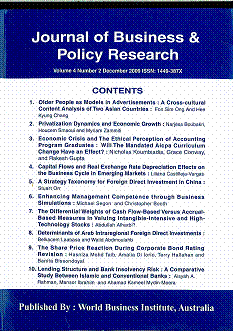Pages
81 – 105
Following the 1978 rural reform, a series of agricultural reforms were introduced in China with an aim to create incentives for the farmers to produce more. However, the nineties’ reforms towards liberalization eventually resulted in a huge drop in agricultural production, which apparently motivated the grain self-sufficiency program in 1998. For a dataset that covers wheat production during these reforms, we examine how and to what extent these reforms affected the Total Factor Productivity (TFP) and the welfare of wheat farmers in China, both at the national and at the regional level. We find that although the nineties' price reforms led to a relatively faster growth of the incentivized TFP of wheat production, they failed to improve profits vis a vis welfare for the farmers. A series of weather shocks in the early nineties resulted in a scarcity of cultivable land and a shortage of agricultural labour, which eventually led to a sharp increase in their relative prices. The introduction of grain self-sufficiency program stabilized these agricultural prices but destroyed the growth in TFP for most regions. However, this reform resulted in some improvement in farmers’ welfare. Wheat farmers in China therefore experienced a trade off between productivity and welfare; competition boosted their productivity and regulation improved their welfare. Not only these findings add a completely new set of results to the existing literature, they can also form a strong basis for future agricultural reforms in China.

